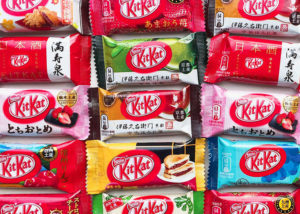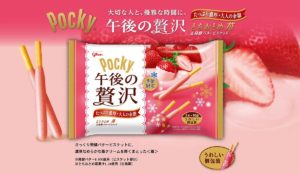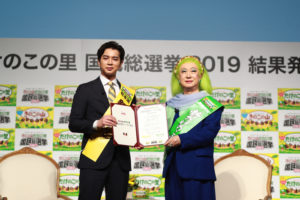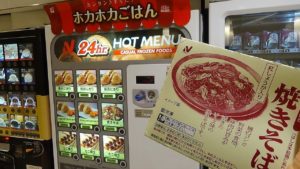Caution, Japanese snacks, and vending machines are not your average chocolates, chips, or cola. Everyone knows snacks of Japan with their interesting flavors. So, when did the experiments with different flavors start? Or, have any of them literally separated the country into two? Yes. Their histories are intriguing.
I looked at a website that sells Japanese snacks quickly, and here is the main idea: They look so tasty just because of their colorful packs even though you have no idea how green tea flavored KitKat would taste.

Japanese KitKats are crazy, and everyone is obsessed with them. KitKat first came to Japan in 1973. Until the 2000s, KitKats in Japan was no different than KitKats in America. Then, the manufacturer in Japan started to experiment on KitKats and made strawberry KitKat. Since then, they are sold so fast, and there is always a new limited-edition flavor. There are around 400 or so different flavors of KitKat in Japan, including regional ones. For example, flavors like Okinawan sweet potatoes, starchy, and deep purple Japanese tubers are available in Kyushu and Okinawa. The adzuki bean-sandwich bars are sold in Nagoya, and Shizuoka has some wasabi-flavored bars.

Nestle says around four million KitKat minis, which is the most popular kind of KitKat, are sold every day in Japan. There are 40 flavors of KitKat mini available in the country, plus 20- 30 rotating new ones.
“Flavour doesn’t matter, just take one,” is their motto. Nearly all flavors are popular, but the core ones are plain milk chocolate, strawberry, sake, wasabi, matcha, Tokyo Banana, and a dark-chocolate variety called “sweetness for adults” according to New York Times.

Other than KitKat, one of their popular snacks is Pocky; stick-shaped pretzels dipped into melted chocolate. Of course, not always chocolate. Pocky comes with a variety of flavors other than chocolate such as sakura matcha, almond, chunky strawberry, even crispy fried chicken, pizza, and shrimp, a total of more than 50. Originated in Japan in 1966, Pocky first tried different flavors other than chocolate in 1971 with almond, then strawberry in 1977.
Fun fact: The name “Pocky” comes from the sound heard when you eat it: “Pokkin.”, as its creators said.

“Pocky Game” is pretty popular outside of Japan as well. It’s when two people start eating from each end of one Pocky. The first one who stops eating loses the game, or the first one who comes to the middle of Pocky wins.

It’s easy in Pocky Game to decide who is the winner, but one rivalry that would not seem to end would be snacks between Kinoko no Yama (Mushroom Mountain) and Takenoko no Sato (Bamboo Shoot Village). Who says snack times should be peaceful? Nothing is better than a long debate on foods. For long, I mean 40 years.

Above: Kinoko (Mushroom Mountain) and Takenoko (Bamboo Shoot Village)
Both were originated in Japan, under the company Meiji Co. First, Kinoko was released in 1975, then its rival in 1979. The war is so out of hand that Meiji Co. had an election about which snack is more popular in 2019 all around the country, and it’s not even the first election. The first was in 2001; the winner was Takenoko with having 55% of the total votes. The second election was in 2018, and the winner was again Takenoko. However, the winner of the election 2019 was Kinoko, (Moshi Moshi Nippon)so the current score is 2-1. This is such a civil war that they even have parties representing each snack!
Even though both are literally the same other than their shape; biscuits dipped into melted chocolate, slight differences noticed by careful people are the cause of this rivalry. I say that’s the only war I would like to see happening in the world.

Above: The leader of Kinoko Party Jun Matsumoto (left), and the leader of Takenoko Party Akihiro Miwa (right)
I can go on and on about snacks like I haven’t mentioned wasabi- beef chips and yogurt- flavored Coca-Cola yet, but I think the best is to check out websites that sell Japanese snacks. They mostly ship worldwide, so you can have a bite at home.
Here are some of them:
https://www.japancandystore.com/
https://www.blippo.com/candy-snacks
https://www.worldofsnacks.com/store/c28/Japanese_Snacks.html
Last thing to point out: Where can you buy them in Japan? Of course, from a convenience store like 7 Eleven, but what about vending machines?
Forget about the ones you see in your schools, these are everywhere. In fact, with over 5 million vending machines across the country, Japan has the highest density of vending machines in the world, with more than 5 million vending machines. That means 23 people per machine!
But, why so many?

Because in Japan, time is everything. What’s the quickest way to get a drink or a snack other than dropping the money and choosing what to have and wait 10 seconds before grabbing it?
Other than snacks like Pocky and KitKat, vending machines have a variety of drink options: water, soda, energy drinks, any type of tea and coffee, even alcoholic beverages like sake and beer. Some sell foods like hot soups, pizza, rice, instant noodles, and fruits. Not just foods, but very interesting things are also sold in vending machines as well, like umbrella, batteries, surgery masks, lucky charms, and fortunes near temples, t-shirts, cups, and cigarettes.

What’s the common thing between snacks and vending machines so that you put them in the same article, you would ask. To survive and rise in the Japanese market, you need to be creative and think fast. If Glico didn’t answer their customer’s request on different flavors of Pocky, most probably there wouldn’t be a snack called Pocky today. They love different flavors and save time because their work is everything, which directly brings us to KitKat’s slogan: Have a break, have a KitKat!
Have a break, guys. You work hard. That wasn’t just for Japanese people, for all of us.
…
